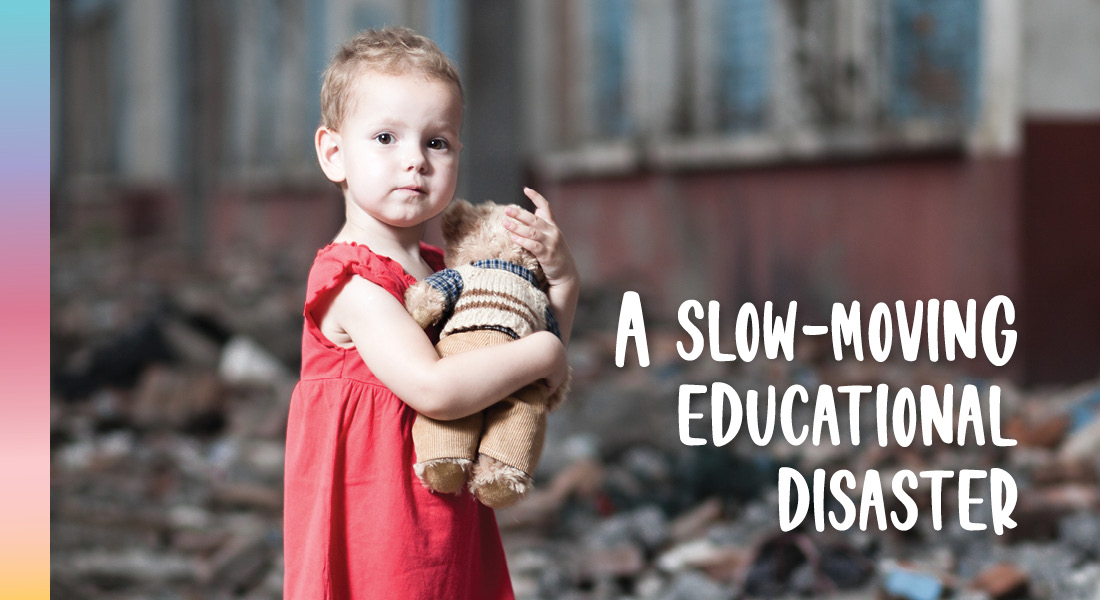“Unprecedented.” It’s a simple word to describe what has been a very (very!) complicated 2020. In a good year, most kids content takes 18 months to get to screen. That means creators today are looking at a 2022 release for a recently greenlit series. But how does one plan for two years down the line when the present is unprecedented?
From the “silent generation” influenced by a pair of world wars, to a prosperous “baby boom” that spoke of nothing but promise and potential, to the launch of the internet and all that entailed—few global events have the power to collectively shape a generation. But for today’s Gen Alphas and Gen Zs, COVID-19 is likely to be one of those defining experiences.
So how can the industry plan for a post-pandemic future? To start, you have to talk to your audience today. Experts from Disney, MarketCast Kids and Dubit went right to the source, checking in with families about how their lives have changed in order to discern which new trends and habits are likely to have staying power. There’s still time to sign up for our Kids of 2022 virtual keynote series for even more future-focused audience intel.
By: Lori Peek
Disasters are mirrors held up to society. In a world with high levels of inequality or educational disadvantage that run along familiar lines of race, those patterns of inequality get reflected back to us in times of disaster.
Some 50% of [US] kids are on free or reduced lunch [programs], which speaks to the almost unspeakable levels of inequality our children were facing before this pandemic. Within a month of COVID-19 taking root, some 40% of children [in Los Angeles] had not even logged on to the online learning system.
What will this look like 18 months from now? If disaster research has taught us anything, [it’s] that if we do not intervene soon, and in dramatic ways, we will only see a deepening of that disadvantage.
Even two years after [Hurricane Katrina], research shows tens of thousands of children were still not back in stable school settings. They were displaced from their home communities, their schools and their social support networks. We found low-income African American children were at higher risk of having their education seriously disrupted.
And all of the children we talked to reported how damaging and disruptive it was to be cut off from their friends, [who are] their primary source of emotional support.
Some children missed big swaths of their educations—weeks, months and even years of schooling. There are real health risks to being out of school. We saw very young children experience what’s called regressive behavior—bed wetting, fighting with [siblings] and reverting in their language use. Other children became teen parents as a result of the “risky health” behaviors that follow disasters amongst youth.
Most kids do recover, in terms of mental health. But we really need to pay attention to the outliers—the 10% to 15 % who may develop long-term mental health issues. A minority of children can develop post-traumatic stress, depression and anxiety.
Kids also experienced cultural loss. Schools are a big provider of key moments in a child’s life. They missed their prom or their eighth- grade commencement. [After Katrina], children shared with us that adults don’t take those moments in children’s lives seriously. [They would say,] “Oh, that was just your first love, it doesn’t matter.” But for a child, missing those moments can be heartbreaking.
We [also saw] how much of a difference teachers, coaches and other [adult] advocates can have during recovery. These [school] advocates will be instrumental in helping put children on the path- way to success after a [literal and figurative] storm.
Eighteen months from now, there’s going to be a lot of sadness. There’s going to be a true reckoning for what’s been lost. But I hope that there’s also a sense of possibility and reflection on what we have learned from this. What can be better? How can we be more connected? How can we stand up for others?
Before this pandemic took root, children were leading some of the biggest climate marches in our history. They were taking to the streets to protest gun violence. They’re helping lead the Black Lives Matter protests now. Stories need to be told of the children who have been absolutely heroic through all of this—the kids doing novel, creative things on behalf of fellow children so that they can all recapture moments of their youth that otherwise will be lost. — As told to Megan Haynes.






















